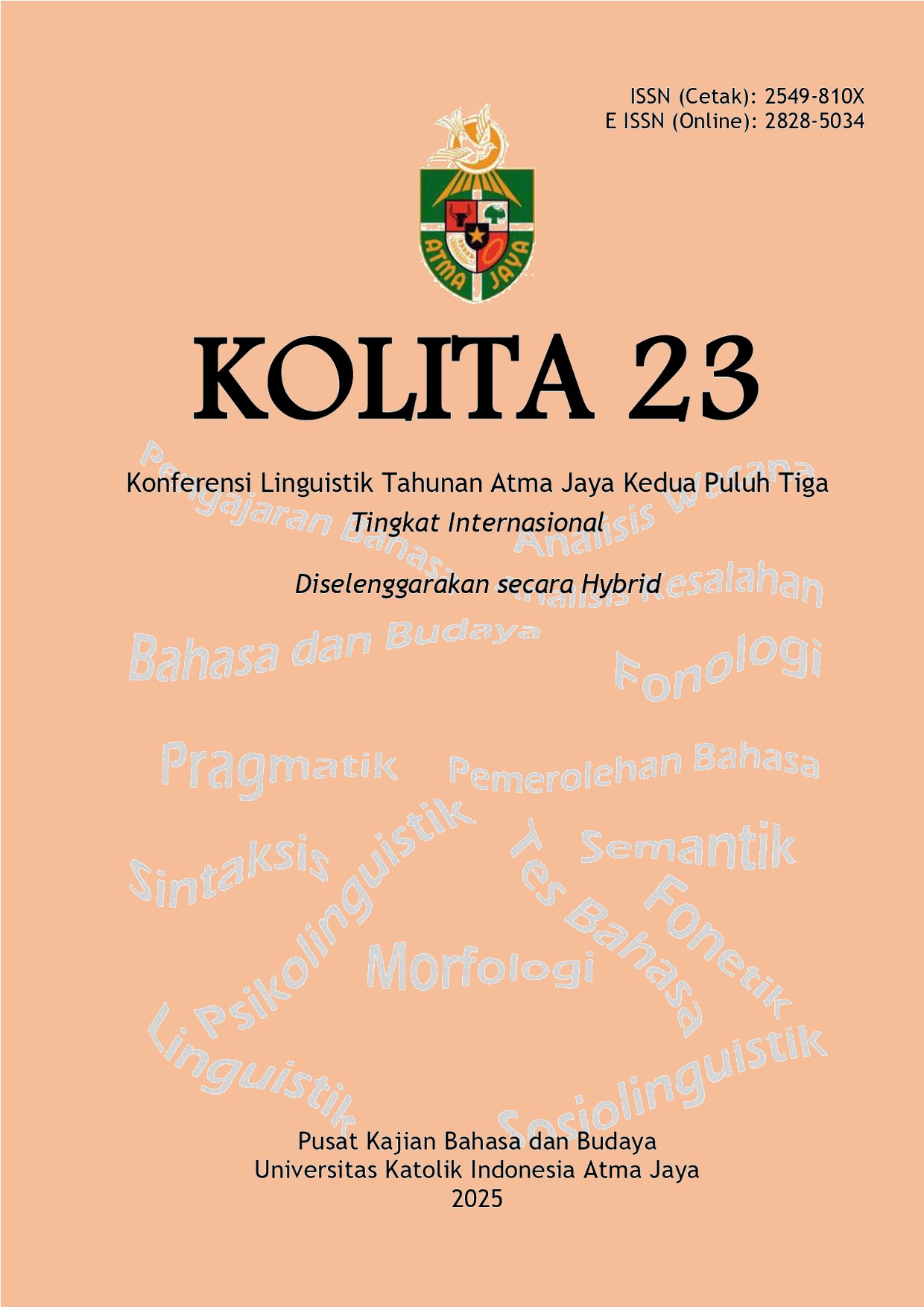VARIASI MORFOLOGI BAHASA JAWA PONOROGO: AFIKSASI, REDUPLIKASI, DAN PEMAJEMUKAN DALAM KONTEKS SOSIOLINGUISTIK
DOI:
https://doi.org/10.25170/kolita.v23i23.7173Keywords:
Javanese language, Morphology, language domain, sociolinguisti, Jawanese PonorogoAbstract
This study examines the morphological characteristics of the Javanese language in Ponorogo (BJP), which is part of the Madiun subdialect. The primary focus is to identify and describe morphological variations that distinguish BJP from Standard Javanese (BJS), especially in its usage across seven social domains: domestic, workplace, government, religious, transactional, social media, and personal. These features include variations in affixation, reduplication, and compounding—core aspects of Javanese morphology. The objective of this study is to document the distinctive morphological forms of BJP and to understand how these forms are employed in social interactions across various domains. Thus, the research not only provides a comprehensive description of the BJP’s linguistic identity but also contributes to understanding dialectal variation of Javanese in Ponorogo and its dynamics within a multilingual society. The study adopts a qualitative method with a sociolinguistic approach that emphasises domain-based language use. The research subjects are native speakers of Javanese in Ponorogo, aged between 17 and 65, selected purposively to represent various age groups, social backgrounds, and educational levels. A total of 50 respondents across 14 different occupations from 21 districts in Ponorogo Regency participated in the study. The research object is the morphological system of the BJP, which was analysed based on recorded utterances. The data were collected through audio recordings and observation techniques, then transcribed and morphologically analysed to identify and describe variations in affixation, reduplication, and compounding. The findings reveal unique characteristics in the BJP’s morphological system. In total, 30 distinctive morphological forms were found across 37 utterances from the 50 respondents (13 utterances contained no unique morphological features). These include 6 unique affixation forms—mostly uncommon prefixes and suffixes—10 reduplication forms (4 total reduplications and 6 partial sound-shift reduplications), and 16 compound words. Examples of these unique forms include: sa'anduk (‘very many’) and gelismen (‘very fast’), which in BJS correspond to akeh banget and cepet banget, respectively; sengah-sengah (‘whatever’), equivalent to sak karepmu in BJS; ingah-ingih (‘hesitant’), equivalent to ora mantep; and compound expressions such as ndah hati (‘impossible’) and ra ketang (‘at the very least’), which in BJS would be mosok yo and sak ora-orane, respectively.






